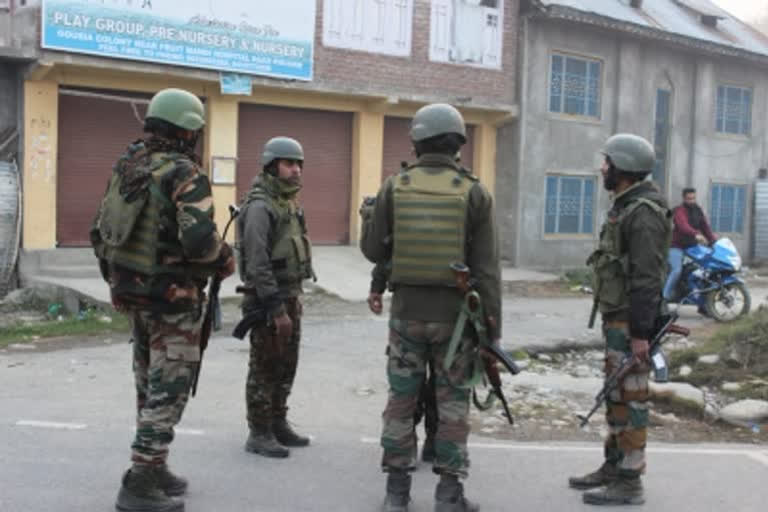Hyderabad: Jammu and Kashmir, after being downgraded to a Union Territory, is getting a new political landscape, rather, a turf to fight electoral politics. The boundaries are being redrawn for constituencies on the basis of topography and terrain, doing away with Census 2011. Whether the elections are conducted in the coming year is what everyone is waiting for but delimitation will be one of the decisive factors for redrawing a new political landscape in entire Jammu and Kashmir.
The Delimitation Commission mandated to redefine assembly segments considering three geographical factors has divided J&K into three categories - Hills, Mix of Hills and Flat areas. However, population in areas that are flat may hardly get any benefit as the Commission is considering the geographical factors alone.
Hills and Mix of Hills have been allotted seats with less population size. Jammu region makes a maximum of its constituencies in hills and mix of hills category whereas entire Kashmir is mostly flat.
Know the Delimitation Commission formed last year
The Delimitation Commission, formed a year ago and headed by former supreme court judge Justice (retired) Ranjana Prakash Desai, has prepared a draft for redefining the assembly constituencies of J&K. The draft, apparently, will be a bliss for Jammu and it appears to be a bit easier for BJP to score over Kashmir-based mainstream parties in the upcoming elections.
The Delimitation Commission, which also includes the Chief Election Commission and J&K Election Commissioner, has shared the draft with five associate members of the commission- Jitender Singh (BJP), Jugal Kishore (BJP), National Conference leaders Mohammed Akbar Lone, Farooq Abdullah, and Hasnain Masoodi - for their inputs. Once these associate members - MPs of BJP and NC- are done with their response the proposed recommendations will be put in the public domain for the feedback of the general public.
The number and ratio of the population have always been a challenge for the Jammu region in the erstwhile state assemblies to have their voice heard. Due to the higher population size, Kashmir had always had an upper hand both choosing a chief minister or making other political demands.
Jammu region has been allotted six seats each in Udhampur, Kathua, Sambha, Rajouri, Doda, and Kishtwar. Meanwhile, Kupwara, a district in Kashmir, is allotted one seat. The Jammu region will have a total of 43 seats while Kashmir will have 47 seats, besides the Kupwara seat, after the commission recommendations are implemented.
Election process begins in Jammu and Kashmir
Meanwhile, the preparations for elections in J&K have already begun with more political overtures for Jammu-based parties led by Bharatiya Janata Party (BJP).
Jammu’s Kathua, Udhampur, and Sambha make 85 percent of the Hindu population, and the rest of the three districts have 35 and 45 percent of the Hindu population that will benefit the BJP most. The parameters the commission chose to redraw the electoral segments will no way tilt the balance towards Kashmir for not being a difficult terrain.
Most of the districts in Kashmir fall in the valley- flat areas- surrounded by huge mountain ranges. The Jammu region’s constituencies are situated on hilly terrains and hardly have any flat areas. The population is consequently thin.
In 2002 and 2008 the boundaries of parliamentary and assembly constituencies were redrawn across India except for J&K because of the special status it enjoyed. After the region lost the special status, the commission was formed, primarily, aiming to maintain the parity between the two regions but the proposed recommendations have drawn eyebrows even from parties, that are seen as supporters of Centre in the Kashmir region, like Apni party, Peoples Conference, etc.
Jammu gets an advantage over Kashmir
The draft proposing to provide more seats to Jammu against Kashmir brazenly shows a disparity that may widen the divide between the two regions more, the aggrieved parties believe. Kashmir-based parties have shown their displeasure immediately after the commission shared the draft with members concerned. They even hinted at challenging the proposed draft in the Supreme Court where the case for Article 370 is pending for next hearing.
Given the population size after the proposed delimitation, the constituencies in Kashmir have 1.5 lakh voters as compared to 1.25 lakh voters in the constituencies falling in Jammu.
Since the population keeps changing with the number of births and deaths taking place relentlessly, Article 81 of the Constitution intervenes to allow a rational balance between the population of each constituency and the number of seats allotted to them throughout the respective states across the nation. The article does now allow any disparity while maintaining the ratio between the constituencies on the basis of population.
Kashmir with a population ratio of 56 percent will have 46 seats, making it a 52 percent seat share of the assembly. Meanwhile, Jammu with 43 percent of the population share and 47 percent seat share in the legislative assembly, will have 37 seats.
The erstwhile state of Jammu and Kashmir had a total of 111 assembly seats in which four were allocated to Ladakh, thus leaving 107 seats with the Union Territory of Jammu and Kashmir. Twenty-four seats were reserved for unrepresented regions occupied by Pakistan locally called POK (Pakistan Occupied Kashmir).
Schedules Caste gets representation in draft plan
Jammu and Kashmir had only 12 districts till 1995, and it was after the delimitation exercise in 1994-95, on the basis of the 1991 census, the erstwhile state redrew boundaries and rose to 20 districts. There were seven seats reserved for Schedule Tribes before Article 370 was read down in 2019 and no seats for Schedule Castes. However, the Delimitation Commission 2021 has proposed nine seats for Schedule Castes, which mostly will benefit the Jammu.



